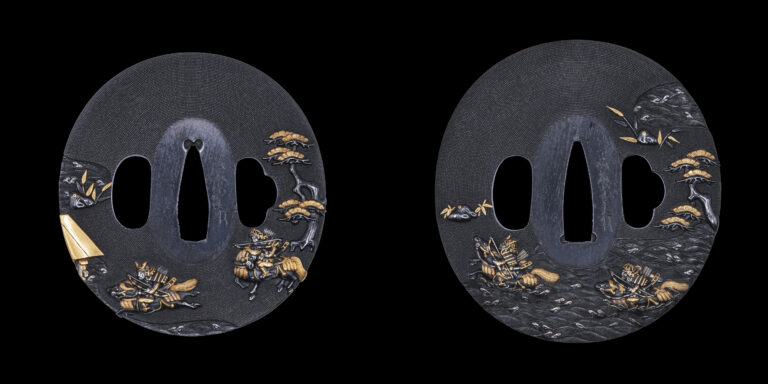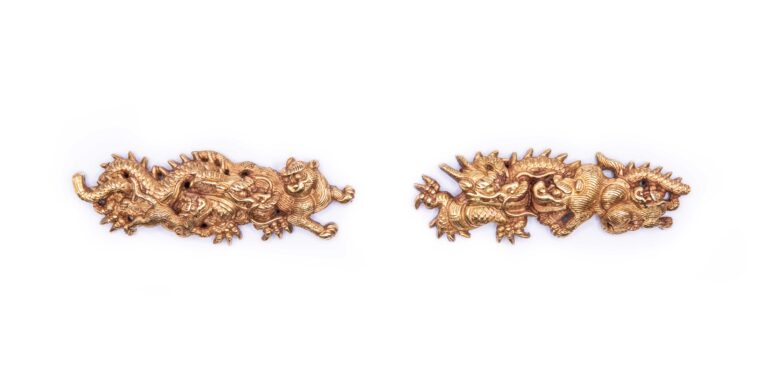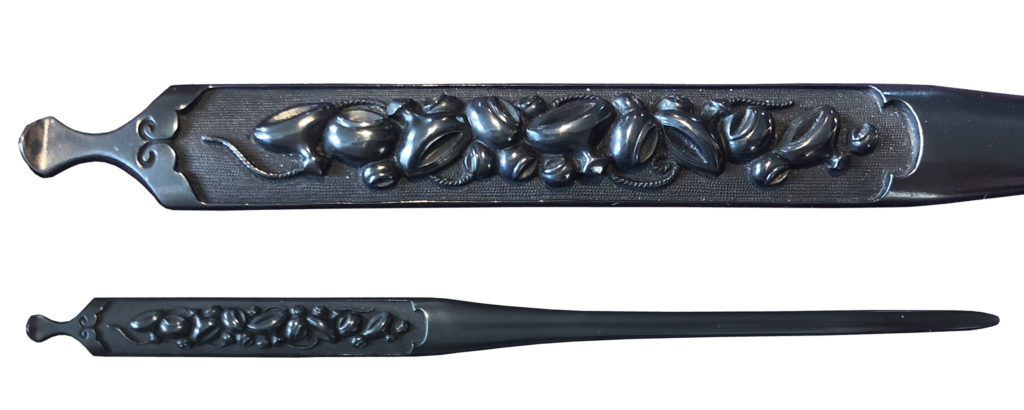
Everything about Japanese Tsuba and Kodogu
Tsuba.InfO
Introduction to TSUBA and KODOGU
- about Japanese swordfittings -
Nihonto - The Japanese Sword
The Japanese sword is not only a weapon brought to perfection over centuries but has always been regarded as a piece of art. It is for that reason, that today Japanese swords are collected, preserved and appreciated not only in Japan but worldwide. When referred to Japanese Swords, one mainly speaks of the blade itself apart from the mounting.
Koshirae

Tsuba

Menuki

Menuki are small pieces of Metalwork which are placed on the handle and half hidden under its winding. They are often regarded as the soul of the sword and one can imagine that hiding such minute pieces of softmetal work away from the observers eye might be quite an understatement.
Kozuka

The Kozuka is a small knife inserted into a slit on the outside of the scabbard. While there are also beautiful Kozuka blades extent, the handle is what is generally collected today and referred to when Kozuka is mentioned.
Kogai

The Kogai is a pin shaped utensil which is inserted into the scabbard of the sword. It is said that Samurai used it as a multi-purpose tool to comb their hair, scratch themselves under their armor or use them as chopsticks, as some of them consist of two parts which can be divided in the middle.
Fuchi Kashira

The Kashira forms the top of the Tsuka. The Fuchi is placed directly under the Tsuba and marks the end of the Tsuka. They were produced as matching pairs during the middle or later Edo period. During older times i.e. Muromachi-period. Kashira had been made of laquered horn whereas the fuchi had been made of metal. During the Edo period often seemingly not matching Fuchi Kashira had been produced intentionally in Higo province.
Tosogu Ranking
Among Tosogu there existed a ranking during the Muromachi and Momoyama period. Most important and first are the menuki, second the Kogai and after this the Kozuka. The Tsuba still had been judged as a helpful necessity more or less simple. Neither the Fuchi as a clamp nor the Kashira had any rank.
Appreciation of high Quality Tsuba
To learn about Tsuba and Kodogu, and maybe about any artworks in general it is of utmost importance to start learning about the best quality first. Looking at the best pieces available will accustom your eye and will help you differentiate. This is why we want to show you as many pieces of high quality as possible, look at them a lot and you will automatically be able to distinguish art from trash and be able to appreciate their great craftsmanship.
More On Tsuba.Info
Tsuba and Kodogu schools
Learn about the most important makers and schools of Tsuba and Kodogu. Also find an overview of the Japanese historic periods and the respective schools active at each time.
Services
Do you need help with the export of Swords or Kodogu from Japan, or are searching for that one Tsuba you still need for your collection? Or you want to have a fast expert opinion about Quality and potential prices of your pieces?
Contact us!

